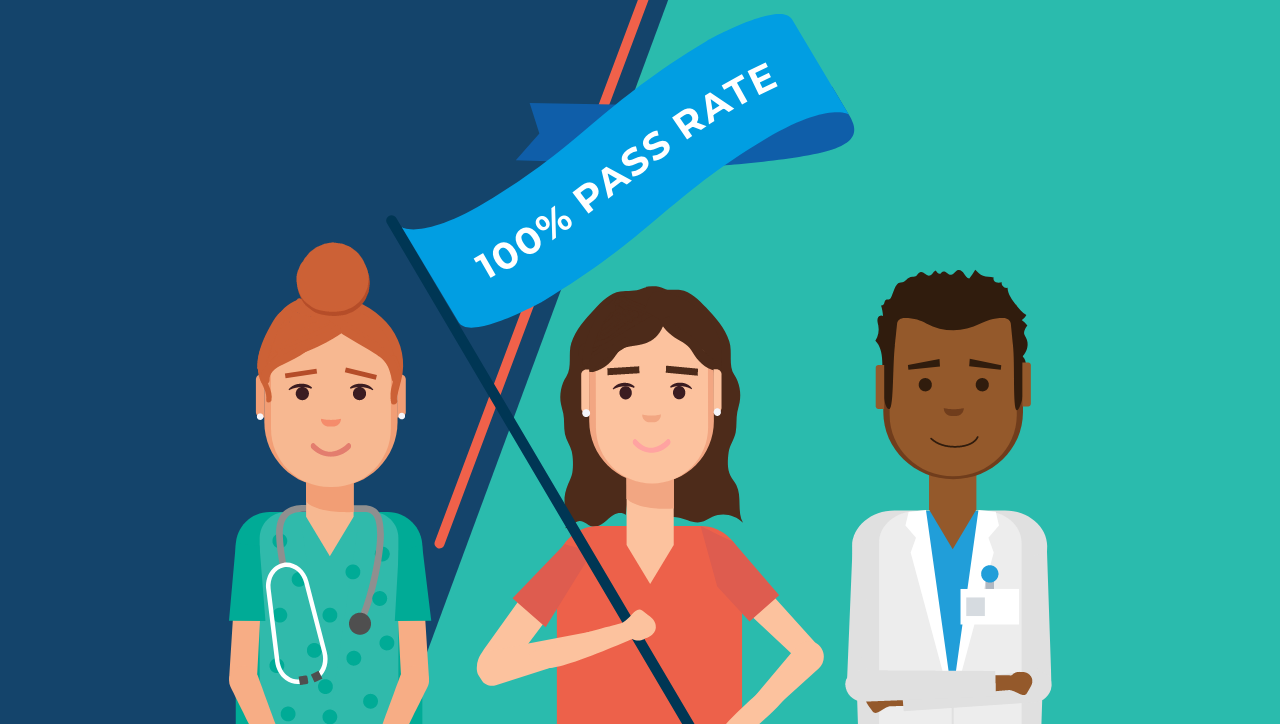Identifying At-Risk SLP Student Clinicians Early

A primary challenge in Speech-Language Pathology (SLP) programs is efficiently allocating resources to support early identification of at-risk SLP students. Without sufficient key and objective data obtained early in the program, at-risk students are not identified quickly, resulting in intensive remediation needs later. This can strain faculty resources and affect student morale, impacting overall program efficiency and student confidence. Without objective, early data, SLP students may also lack insight into how to prepare optimally for the Praxis® to achieve a first-time pass.
This underscores the importance of SLP programs and faculty in identifying at-risk students early and providing tailored support to bridge learning gaps. However, limited resources and increased remediation demands can complicate these efforts. By pinpointing and addressing these barriers, programs can streamline support strategies, optimize faculty resources, and enhance student success.
In this blog, we’ll explore key challenges that educators face in identifying at-risk SLP students, the impact on resource allocation and remediation, and the evidence-based solutions that can enhance student success.
Challenges in Early Identification of At-Risk SLP Students
Identifying at-risk students can be a complex process requiring innovative solutions and strategic planning. Let’s explore the key obstacles educators encounter in executing this crucial task.
1 – Limited Screening Tools
Current screening tools may lack the depth and comprehensiveness needed to identify all at-risk students—a shortcoming that can result in delayed support and intervention, leaving students disadvantaged before they even begin their Praxis® preparation.
2 – Variability in Student Backgrounds
The diverse academic, cultural, and personal experiences that students bring can influence their readiness and study approaches. Such differences challenge the creation of a standardized screening process, necessitating more nuanced, individualized assessments to accurately identify students who may be at risk.
3 – Student Reluctance to Seek Help
Some students may hesitate to disclose their difficulties due to self-confidence issues, fear of stigma, or lack of awareness. This can delay their access to crucial support resources, impacting their overall preparedness and success.
4 – Faculty Workload Constraints
Faculty often have to balance multiple responsibilities, including teaching, research, and clinical duties. The heavy workload may limit their ability to monitor and support individual students effectively, leading to potential oversight in cases where early intervention could be pivotal.
Implications for Resource Allocation and Remediation in SLP Programs
Delayed identification of at-risk students impacts not only individual student outcomes but also places substantial demands on SLP program faculty. Without early interventions, programs may be required to invest more heavily in intensive remediation efforts, stretching faculty time and driving up support costs. We take a closer look at how delayed intervention complicates resource allocation and amplifies remediation demands.
1 – Increased Remediation Costs
When at-risk students are identified late, more intensive remediation efforts are needed—and at a higher cost, placing additional financial strain on programs as they must then allocate more funds and resources to ensure comprehensive support.1
2 – Student Stress and Burnout
Delayed identification and intervention can prolong student struggles, heightening stress levels and increasing the risk of burnout and failure on the Praxis®. The result? A cascading effect that can spill onto both academic performance and overall well-being.
3 – Resource Drain on Program Services
Programs may need to direct additional resources toward tutoring, counseling, and other support services to help struggling students get back on track. This can limit the availability of these services for other students.
4 – Demands on Faculty Time
Faculty are often required to dedicate extra time to individualized support and remediation, diverting attention from their other essential responsibilities. Over time, this increases burnout risk and further stretches program resources.1
An Evidence-Based Solution for Early Identification of At-Risk SLP Students
To address the challenges of delayed identification, SLP programs can leverage data-driven, evidence-based tools that empower faculty with actionable insights, allowing for timely, targeted interventions that optimize student outcomes and program resources:
1 – Robust Analytics for Real-Time Insights
Programs need immediate, actionable insights into learner performance by category and topic to identify at-risk students early. By leveraging a robust data analytics engine, faculty can monitor student progress continuously and in real time, spot potential areas of concern, and intervene with tailored support. Access to performance data also allows educators to set informed, personalized educational goals and track student progress, ensuring proactive responses to learning gaps.
2 – Aggregate Data for Curriculum Enhancement
Program and cohort performance data reveal essential insights into specific curricular gaps that may negatively impact student outcomes. Through comparative analytics, educators gain a larger perspective on how their students’ knowledge and skills measure up against national benchmarks. These insights help identify underperforming areas, guiding faculty to adjust course content and delivery to ensure alignment with program goals and improved student competency.
3 – Longitudinal Data for Continuous Improvement
Longitudinal data tracking enables programs to monitor student and cohort progress over extended periods. By leveraging this comprehensive view, faculty can pinpoint trends in performance, identify areas needing improvement, and steer progress toward meeting curricular objectives. Continuous monitoring supports more effective resource planning, ensuring that remediation and support efforts align with long-term goals for student success and program quality.
4 – Assessment Tools for Praxis® Readiness
Faculty benefit from assessment tools designed to integrate easily into the curriculum, with content aligned to the Praxis® exam. Using board-style questions and quizzing tools, faculty can conduct both formative and summative assessments that simulate the actual exam experience. This approach helps students develop exam readiness while providing educators with actionable insights into individual and cohort strengths and weaknesses. Furthermore, these assessments offer a comparative view of student performance on a national level, enabling educators to design customized study plans, tailor end-of-program review sessions, and address specific content areas that may need reinforcement.
The TrueLearn solution empowers SLP programs with a proven solution, integrating learning science with advanced data analytics to support early identification and drive student success. Real-time, longitudinal tracking provides faculty with objective insights into student performance, enabling data-informed lesson planning and effective remediation efforts. Comparative analytics allow educators to benchmark student and program performance against national standards, giving students a clear view of how they measure up to peers nationwide.
TrueLearn’s predictive analytics further enhance support, offering a clear view of exam readiness and forecasting Praxis® exam outcomes. This capability enables faculty to identify at-risk students and pinpoint weak areas, allowing for the creation of targeted remediation plans that efficiently bridge learning gaps.
Learn how TrueLearn can help your institution
drive optimal student outcomes.
Learn MoreReferences & Footnotes
1 Kalet A, Guerrasio J, Chou CL. Twelve tips for developing and maintaining a remediation program in medical education. Med Teach. 2016;38(8):787-792. doi:10.3109/0142159x.2016.1150983.
*PRAXIS® is a registered trademark of Educational Testing Service (ETS). This content is not endorsed or approved by ETS.


